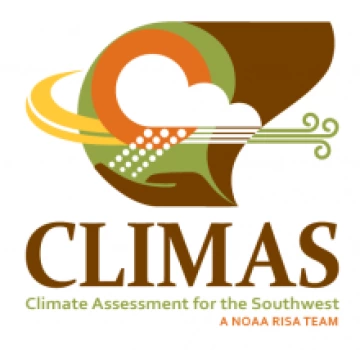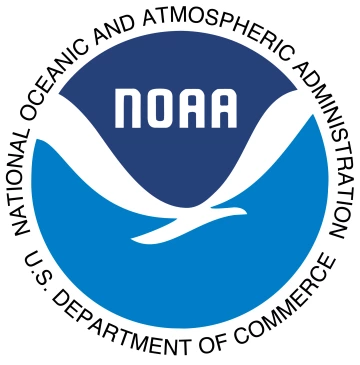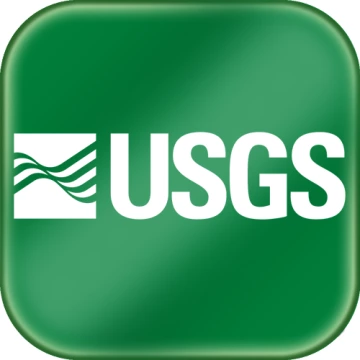< Back to Climate Viticulture Newsletter
Hello, everyone!
This is the 2019 July issue of the Climate Viticulture Newsletter – a quick look at some timely climate topics relevant to winegrape growing in Arizona and New Mexico.
A Recap of June Temperature and Precipitation
Monthly average temperatures in June were close to normal for almost all of Arizona and New Mexico, with values within 2° Fahrenheit of the 1981-2010 average (yellow and light green areas on map). A few locations within the region were 2° to 4° Fahrenheit below normal (dark green areas on map). For many places, it has been several years since the average June temperature has been near normal, with above-normal values instead having been the rule. Excessive heat also was largely absent this past month. From a vine’s perspective, this can mean daytime temperatures above 95° to 100° Fahrenheit, the point at which losses through respiration become greater than gains from photosynthesis and phenological development grinds to halt.
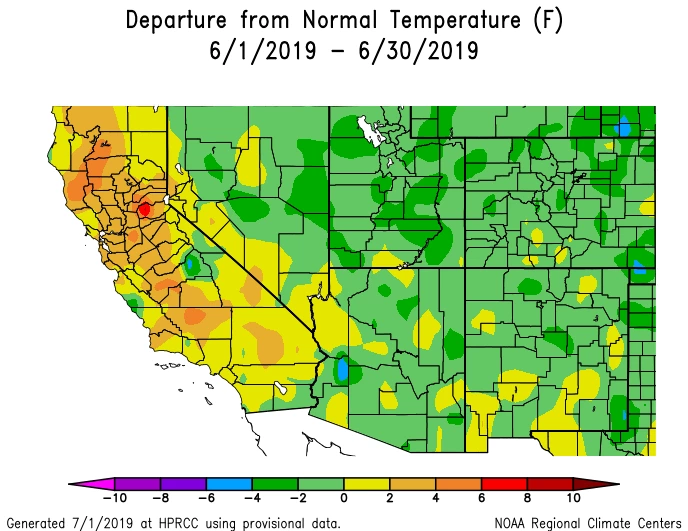
NOAA ACIS
Monthly precipitation totals were less than 50% of normal for almost all of Arizona and many parts of New Mexico (red areas on map). With occasional scattered storms, however, a few locations did manage to record above-average amounts (green, blue, and purple areas on map), most notably near Las Cruces, New Mexico (magenta area on map). But, June is a relatively dry month and above-normal rainfall totals only amounted to half an inch or less for many of these locations, such that irrigation savings were likely minor.
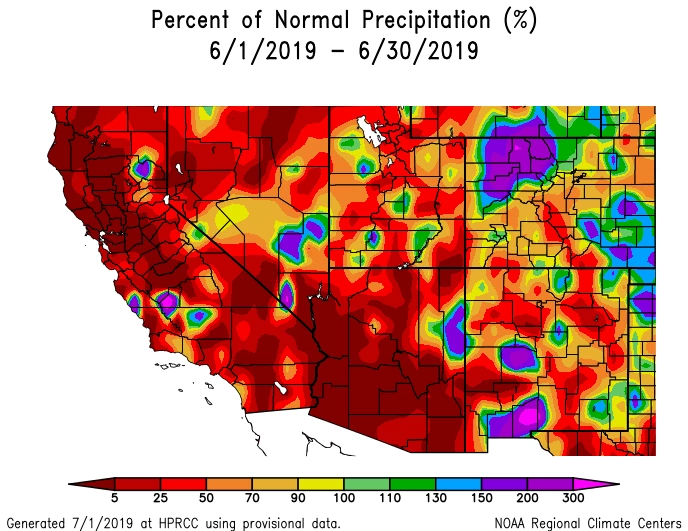
NOAA ACIS
The Outlook for July Temperature and Precipitation
Equal chances for above-, near-, or below-normal temperatures exist for the region (white area on map). During the summer in relatively warm winegrape-growing regions, like those in Arizona and southern New Mexico, studies from Australia suggest that the duration of vine growth stages is less sensitive to cooler- or warmer-than-normal temperatures than during the spring. For example, warmer-than-average temperatures may not significantly shorten the length of the ripening period, whereas they can shorten the time it takes for vines to go from budburst to fruit set. However, research also indicates that grape quality is sensitive to temperature variations at this time of the year. Too much heat, for instance, can result in higher sugar levels and lower acidity, as well as a decrease in anthocyanins, which can have a negative effect on tannin retention, ageing, and color of red wines.
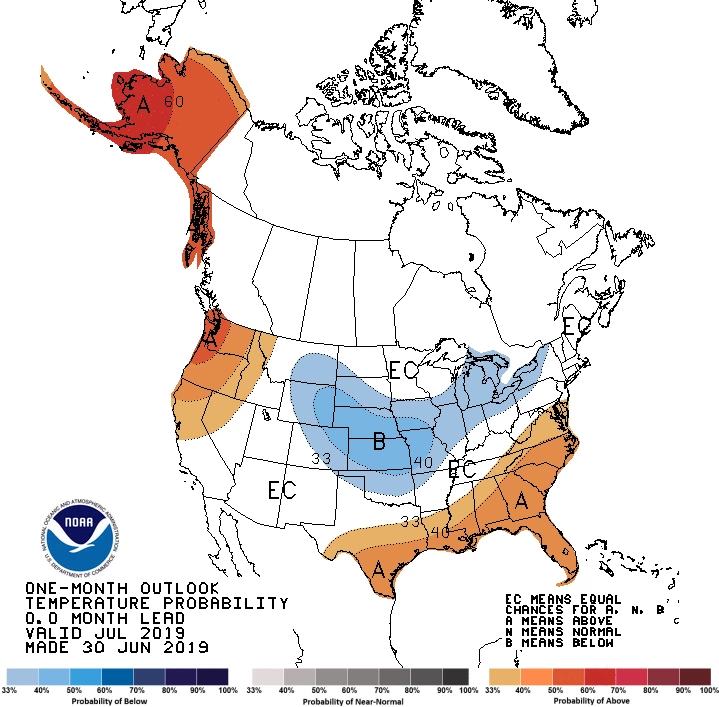
NOAA CPC
There is a slightly increased chance for below-average precipitation across many winegrape-growing areas in Arizona, and an even greater chance across the western third of the state (brown areas on map). In contrast, slightly increased chances for above-average precipitation exist for northern, central, and eastern New Mexico (green area on map). Equal chances for above-, near-, or below-average precipitation exist for the rest of the region (white area on map).
Now that we’re in July and typically experience relatively high humidity and precipitation amounts across the region, drier-than-normal conditions may decrease pest and disease pressures whereas wetter-than-normal conditions may increase them. Another issue tied to the monsoon is the possibility for hail. Inexpensive do-it-yourself hail pads can be useful for recording events and measuring hail size, and invaluable for insurance purposes.
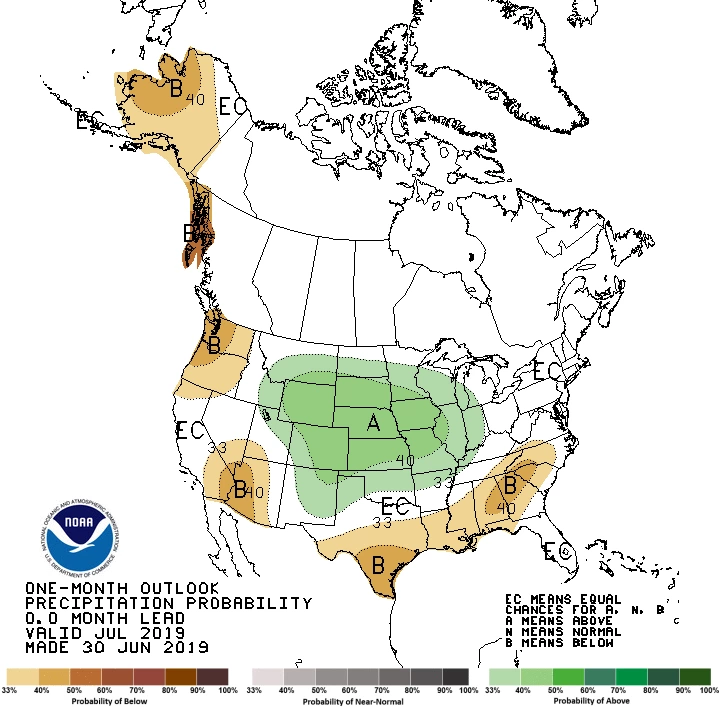
NOAA CPC
Heat Accumulation So Far This Year
A variable that helps us understand and predict the timing of vine growth stages is the accumulation of heat during the year, often quantified by the sum of growing degree days (GDDs).
With relatively cool May and near-normal June temperatures for most of the region, we look to be starting July with accumulated GDDs that are below average values across much of Arizona (blue and green areas on map). This is the case, for example, in the Sonoita, Willcox, and proposed Verde Valley American Viticultural Areas (AVAs). In New Mexico, heat accumulations are slightly below or near average for much of the state (green and yellow areas on map).
Current accumulated GDDs also are lower than values from this time last year for several winegrape growing areas. We’d be interested in hearing from you if this has corresponded to different dates at which you have observed growth stages of your vines.
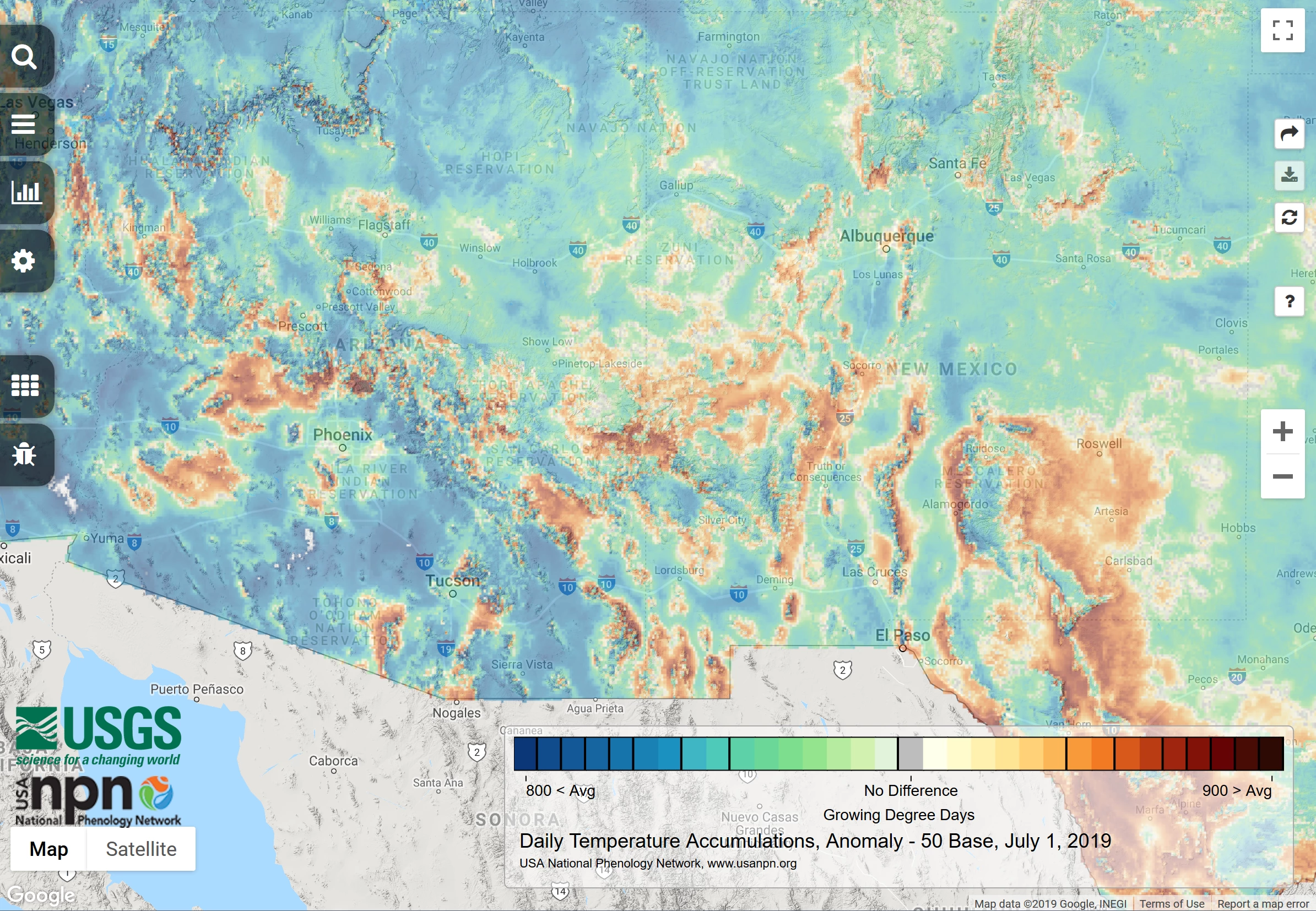
USGS NPN
'Tis the (Wildland Fire) Season
Since we’re not yet awash in monsoon rain, we’re still at risk for wildland fire. In addition to the relatively dry and warm conditions that are still present, a sputtering start to the summer rainy season can produce lightning and gusty winds from the few storms that do occur. Smoke taint, which can eventually result in undesirable wine flavors and aromas, and displacement of insects from the burn area to a vineyard are two possible impacts to viticulture from wildland fire.
There is an above-normal potential for significant wildland fires in a swath from northwestern to southeastern Arizona and the western part of the New Mexico ‘boot heel’ (red areas on map). Otherwise, the potential for significant wildland fires in the region is near normal (white areas on map).
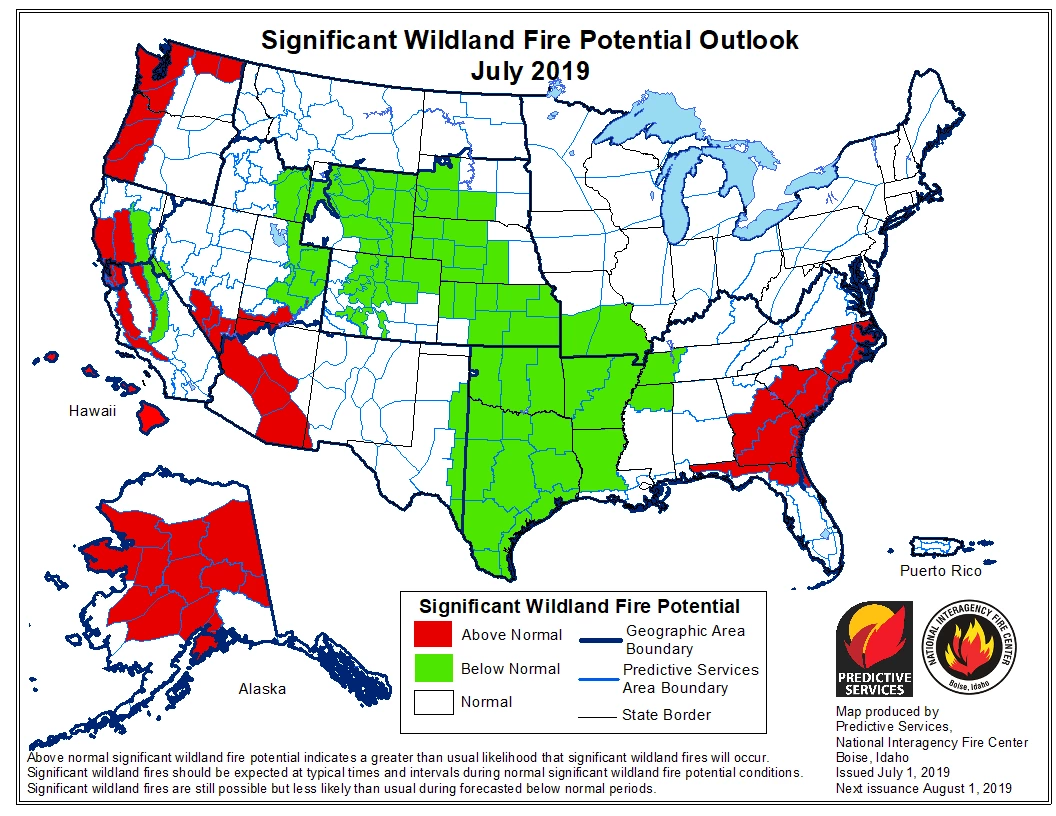
NICC NIFC
In addition to possibly helping lead to a later monsoon start, the relatively weak El Niño event that began in early 2019 also might influence the number and strength of tropical cyclones to our south in the eastern tropical Pacific Ocean. The current El Niño event is partly why there is a 70% chance that such tropical cyclone activity is above normal this year. Although distant, tropical cyclones in July can send moisture up the Gulf of California and into the region, further fueling monsoon precipitation. So far, the tropical cyclone season in the eastern tropical Pacific Ocean is also off to a slow start.
For a more in-depth and jovial discussion on the challenges in forecasting seasonal aspects of the monsoon, check out the June 2019 episode of the Southwest Climate Podcast.
Please feel free to give us feedback on this issue of the Climate Viticulture Newsletter, suggestions on what to include more or less often, and ideas for new topics.
Did someone forward you this newsletter? Please contact us to subscribe.
Have a wonderful July!
With support from:
